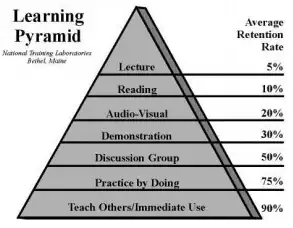Studies that claims "learning by teaching" has a 90% retention rate cites a study published by "National Training Laboratories, Behel, Maine". However, that study is not available anywhere to confirm if the methodology applied is reliable.
Example of the claim from Contemporary database topics: learning by teaching:
The Learning Pyramid shown in Fig.1b underpins this approach; it shows the effectiveness in promoting student retention of the material taught for a range of learning activities. Teaching others is shown to have the highest retention rate.
